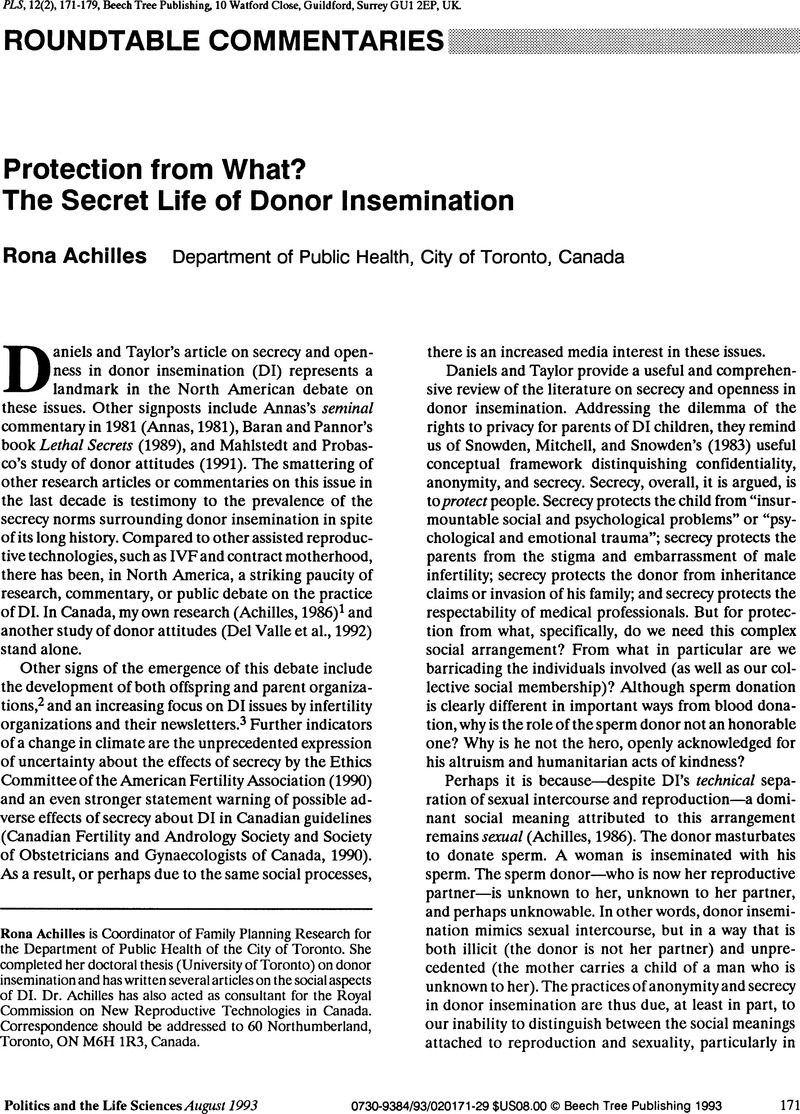Crossref Citations
This article has been cited by the following publications. This list is generated based on data provided by Crossref.
Daniels, K. R.
1998.
The social responsibility of gamete providers.
Journal of Community & Applied Social Psychology,
Vol. 8,
Issue. 4,
p.
261.
Birenbaum-Carmeli, Daphna
Carmeli, Yoram S.
and
Yavetz, Haim
2000.
Secrecy Among Israeli Recipients of Donor Insemination.
Politics and the Life Sciences,
Vol. 19,
Issue. 1,
p.
69.



